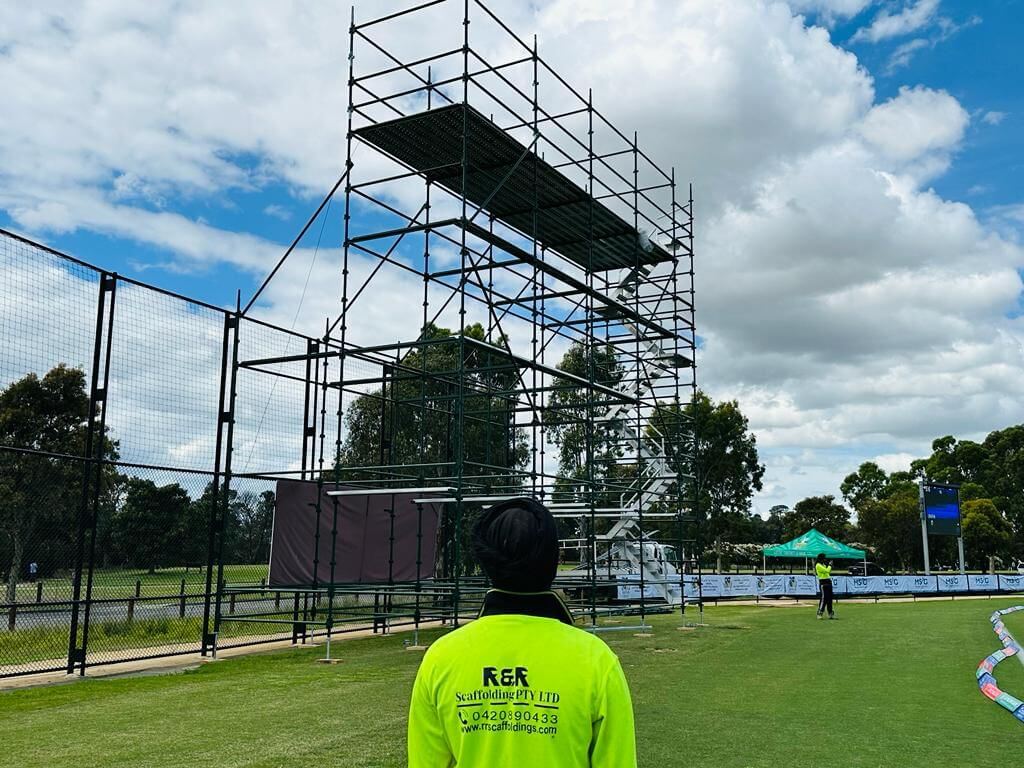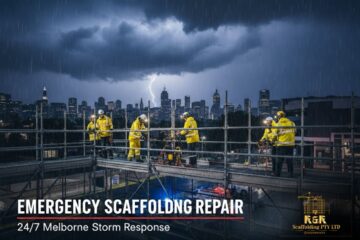For site managers across Melbourne, scaffolding safety is not just a best practice—it’s a legal requirement. With evolving regulations and increased on-site scrutiny, a single oversight can lead to devastating fines, project delays, or worse, a serious incident. The regulatory landscape is shifting towards smarter, more accountable systems . This definitive guide breaks down the critical scaffolding safety laws for 2025, providing the knowledge you need to protect your crew, your project, and your reputation.
Why Melbourne’s Scaffolding Laws Are Changing in 2025
The updates to scaffolding regulations are driven by a clear need to enhance on-site safety through modernized practices and technology. Regulators are moving from a reactive to a preventive approach, focusing on fall protection and structural integrity . For Melbourne sites, this means alignment with both national standards and local council bylaws, including the City of Melbourne’s Activities Local Law 2024 . The core objective is simple: to ensure every worker returns home safely.
The 5 Most Critical Scaffolding Laws for Melbourne Site Managers in 2025
Staying ahead of these key areas will form the backbone of your compliance strategy this year.
1. Mandatory Daily Visual Inspections & Digital Logs
Gone are the days of informal checks. A cornerstone of the 2025 guidelines is the requirement for documented daily visual inspections before work commences .
- What You Must Do: Designate a responsible person (e.g., site foreman) to check for damaged components, loose fixings, and missing toe boards or bracing .
- Documentation is Key: Every inspection must be recorded in a scaffold logbook or a digital checklist. These records must be kept on site for a minimum of 90 days and be available for audit at any time .
2. Enhanced Fall Protection and Edge Protection Systems
With falls from height remaining a leading cause of fatalities, regulations around fall prevention have been tightened significantly .
- Beyond Basic Guardrails: Systems must be more secure, with toe boards now considered a standard, non-negotiable component .
- Training and Tech: Crews may need proof of up-to-date fall protection training. The industry is also leaning towards integrated smart safety technology that can alert supervisors to loose rails or unclipped harnesses .
3. Stricter Load-Bearing Standards and Certification
The assumption that “it looks strong enough” is no longer acceptable. Regulations in 2025 enforce tougher, verified rules around how much weight scaffolds can hold under real-world, dynamic conditions .
- Verified Load Calculations: You must have engineer-certified load calculations for your specific setup, ensuring it can handle not just static weight but the movement of workers, tools, and materials .
- Component Scrutiny: Elements like frame joints, support braces, and locking mechanisms are under increased scrutiny. Regular, documented testing of these components is becoming a standard requirement .
4. Revised High-Risk Scaffold Definitions and Tagging Protocols
The definition of what constitutes a “high-risk scaffold” has been updated, bringing more structures under stricter control.
- Clear Tagging System: All scaffold access points must now be tagged with a clear, color-coded system (red, yellow, green) to indicate their safety status. Tags must be updated after any modification or severe weather event .
- Licensed Installation: Modular scaffolding, mobile scaffolds above 4 meters, and suspended platforms often fall into the high-risk category and must be erected or altered only by licensed scaffolders .
5. Alignment with Smart Scaffolding and ISO Standards
The future of scaffolding is digital and globally aligned. 2025 marks a significant step towards standardizing “smart” scaffolding systems and aligning Australian practices with international ISO standards .
- Smart Scaffolding: Expect formal standards for systems that include sensors for load monitoring, digital inspection logs, and integrity checks following weather events .
- Global Best Practices: This alignment helps streamline approvals for complex projects and ensures a consistent, high level of safety comprehension across the industry .
Summary of Key Regulatory Changes for 2025
| Regulatory Area | Key Change for 2025 | Primary Action for Site Managers |
|---|---|---|
| Inspections | Mandatory documented daily visual checks | Implement and maintain a digital or paper logbook on site |
| Fall Protection | Enhanced guardrail security & mandatory toe boards | Audit all edge protection; verify crew training certifications |
| Load Management | Stricter dynamic load testing & certification | Obtain and file site-specific engineering load plans |
| Scaffold Tagging | Universal color-coded tagging at all access points | Ensure tags are present and updated after any change or weather event |
| Technology & Standards | Move towards standardized smart systems & ISO alignment | Inquire about smart system integrations with suppliers |
Your On-Site Compliance Checklist for 2025
Use this actionable checklist to ensure your site meets the new standards:
- Documentation: Daily inspection logs are completed, signed, and readily available.
- Edge Protection: All working platforms have secure guardrails and toe boards installed.
- Load Management: Engineer-certified load plans are on site and have been communicated to the team.
- Scaffold Tagging: All towers are correctly tagged (Green for “safe for use”), and tags are current.
- Licensed Crews: Verification that only licensed scaffolders have erected or altered high-risk structures.
- Equipment: A pre-start check confirms all components are undamaged and correctly assembled.
Conclusion: Build Safe, Build Smart, Build with Confidence
The updated scaffolding laws for 2025 are not a burden—they are a blueprint for a safer, more efficient, and more professional Melbourne construction industry. By embracing these changes, you do more than just avoid fines; you build a culture of safety that protects your most valuable asset: your people.
Disclaimer: This article provides general guidance on scaffolding safety laws. Always refer to the official WorkSafe Victoria website and the City of Melbourne’s local laws for the most current and legally binding regulations.



